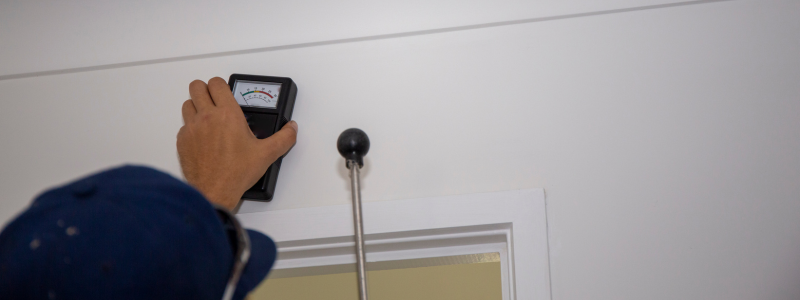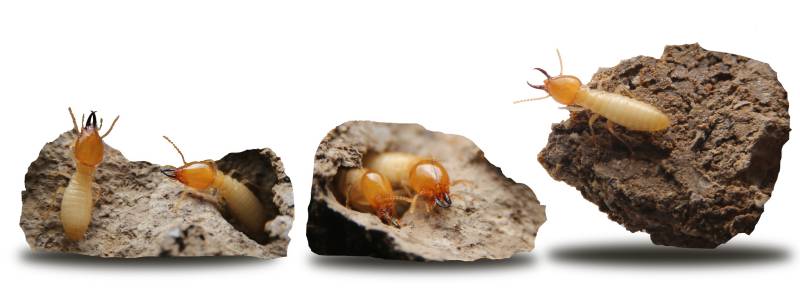How Often Should You Get a Termite Inspection?
The Right Times to Check for Termites
Termites are tiny destroyers that wreak havoc on your biggest investment, your home. But don’t panic. With proactive termite inspections from Green Pest Control, you can catch an infestation early and stop major damage.
So how often should you get an inspection? The answer depends on your situation. We’ll go over the recommendations and benefits so you can make the right decisions.
Summary of Key Points
- Get annual inspections at minimum, per Australian standards
- Homes with no current treatment need more frequent inspections
- Even treated house should be inspected yearly
- Check more often if termites are active in neighborhood
- Inspect every 3-6 months after extreme weather, construction
- Regular inspections provide comfort and allow early detection
Protect your home and your investment. Make professional termite inspections part of your regular property maintenance schedule. Catching problems early saves money and headaches down the road. Contact a reputable pest controller today to schedule your next inspection.
1. Do You Have Termites? Get an Inspection ASAP
If you suspect or confirm termites are actively infesting your home, immediate action is needed. Call a professional pest control company to thoroughly inspect it and develop a treatment plan. The longer you wait, the more damage termites can do.
Some of the clues to watch out for:
- Small piles of wings, shed during swarming season
- Hollow sounding wood
- Mud tubes on foundations, walls, floors
- Bubbling paint or wallpaper
Don’t ignore these red flags. Schedule an inspection right away if you see any signs of termites. Treatment costs rise exponentially with increased damage. Fast action can save you thousands down the road.
2. Following Recommended Timelines
Australia has stringent standards when it comes to checking for existing and new building works for presence of these pests.
Termite Inspection for Existing Structures
The Australian Standard AS 3660.2-2000 covers inspections around existing structures.
Some key points are:
- Inspections should should look at all areas inside the interior that can be reached. It should also check around the exterior up to 30 meters away.
- The inspector must look closely at all wooden parts like doors, windows, fences, posts, and paperbark trees for any clues the pesky insects have claimed them.
- Tap testing of structural timbers must be done to identify if they are hollowed.
- The exterior of the building up to a height of 2 meters must be checked for termite tunnels or damage.
- The check should also look at any stored wood, stumps, roots, old tree pieces within 30 meters of the house.
- A report should be written listing everywhere checked, what was found, and what should be done. Pictures of any termite damage found should be included.
- Properties in high risk areas need to be checked more often, every 6 months to 2 years. Lower risk ones can go 2 to 5 years between checks.
Following these rules ensures a thorough check to find termites early. Homeowners should also check that inspectors follow these rules.
Termite Inspection for New Building Work
When building a new structure, termite checks need to follow the Australian Standard AS 3660.1-2000 rules. This covers checking for termites during construction before it is finished.
Key requirements per AS 3660.1 include:
- Do an initial check of the land before building starts. This looks for any damage caused by the critters and things that attract them.
- Do checks at different stages of building:
- After digging and pouring the foundation
- Once framing and roof are up
- When ductwork and electrical are in
- Right before homeowners move in
- Test wooden frames for dampness which draws in termites.
- Look for any risks that let termites attack easily.
- Write a report at each step listing what was checked, results, dampness readings, and what to fix.
- Do a final check to make sure termite protection rules were followed before owners move in.
Doing checks during construction stops termite issues before they start.
3. Minimum Requirement
At a bare minimum, qualified pest controllers recommend a checkup every 3-5 years. Annual termite inspections are better for optimal prevention.
Why so often when termites work slowly? Early detection is key! Termites chew through wooden elements for 3-8 years before any visible damage appears. You need regular checks to catch infestations before they escalate.
4. Have a Current Termite Management System?
If your home is currently given termite treatments, follow your exterminator’s advice on the schedule for re-inspection. Generally, yearly inspections are recommended when using termite baits, foams or other treatments.
Treatment plans can last 3-5 years. Stick to your pest control technician’s schedule for evaluating effectiveness and re-treatments.
5. Confirmed Termites Nearby?
Homes near current termite infestations are at higher risk of their own invasion. If your neighbor had termites, or you receive notice that nearby properties are being treated, be extra vigilant.
In these cases, inspect every 12 months without fail. Termites spread through contact and swarming. Don’t let them march over to your house!
Are There Any Other Times to Get More Frequent Inspections?
- After extreme weather events like heavy rains or flooding that could displace termite colonies
- After nearby construction that could disturb colonies and send them looking for new food sources
- If you are preparing to sell and need a clear inspection report
- If you notice possible infestations like swarms
- If you store firewood or building materials nearby which attract termites
In these cases, inspecting every 3 months allows you to identify issues before they escalate.
Key Benefits of Termite Inspections
Catch Infestations Early
Checking for termites early is super important! Termites munch on wood for years before you see damage. Don’t let them get ahead!
Regular checks let pest pros find termites at the start. Then termites won’t have time to ruin walls, floors, and wood frames.
Prevent Major Damage
Early detection leads to preventing major damage. The longer termites are left unchecked, the more destruction they inflict.
Just 1-2 years of termite damage can cost thousands in repairs. Wait 5-10 years, and you could be looking at a $10,000+ fix. Ouch.
Consistent inspections and treatment won’t guarantee zero damage. But they allow pest management pros to get the infestation under control before things escalate.
Lower Treatment Costs
The less damage from termites, the lower your treatment costs will be. Liquid barrier treatments for early stage infestations often run a few hundred dollars. Extensive repairs for long-term damage cost far more.
A $200 inspection done yearly could save you many thousands down the road. It’s a minimal investment that pays off exponentially.
Feel Better
With regular termite inspections, you’ll have confidence knowing exactly what’s happening. No more wondering about every tiny wood imperfection you stumble across!
Plus, you can tackle the problem proactively when an infestation is found. No need to panic if you have a plan in place.
Conclusion
Termites are sneaky invaders. But arming yourself with information helps you win the battle. Learn the signs of termite activity, follow standards and expert advice, and get regular professional inspections. Catch infestations promptly before major destruction occurs. Taking preventative action reduces costs and repairs over the long run.



